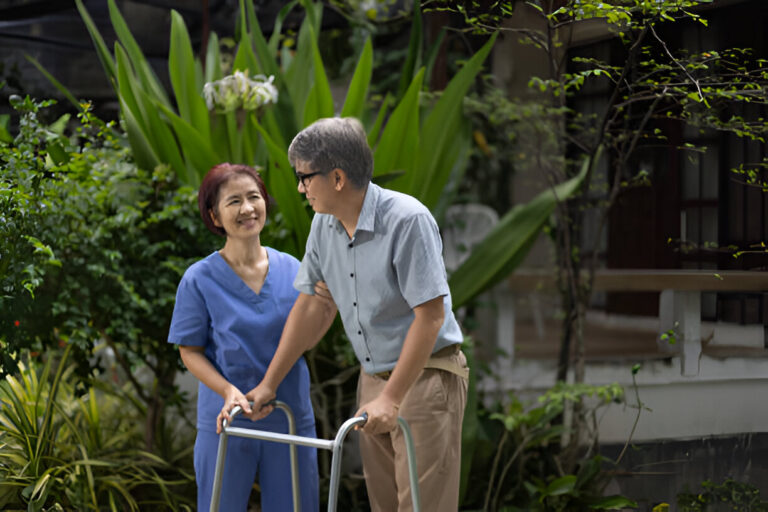Sarcopenia is something that many people have to live with as they get older. This condition causes a loss of strength and muscle mass as the body ages and tends to affect people over 50. Even though the condition isn’t always avoidable, proactive measures can often be taken to lessen the effects of sarcopenia.
Symptoms of Sarcopenia
Unlike some other medical conditions, the symptoms of sarcopenia are not always so obvious and tend to develop gradually as the body gets older and weaker. Sarcopenia symptoms can also mimic symptoms of other medical conditions, so it’s best to see a doctor and undergo imaging screenings and other diagnostic tests to confirm a diagnosis.
Some of the most common symptoms of sarcopenia include:
- A loss of endurance
- Walking difficulties (especially up steps)
- A reduction in muscle size
- Trouble balancing
- Increased fatigue
- Fertility problems
- Difficulty performing daily physical tasks
Causes
Sarcopenia can develop when the body’s signals for muscle cell growth (anabolism) and muscle cell breakdown (catabolism) become imbalanced. Low testosterone can lead to this imbalance and be especially problematic for people with naturally low testosterone levels who haven’t been helped by testosterone replacement therapy (TRT).
People who have certain medical conditions are also more likely to develop sarcopenia. Cases of sarcopenia are often greater among people who suffer from chronic diseases, such as rheumatoid arthritis. Sarcopenia is additionally linked to insulin resistance, which makes diabetes sufferers more prone to developing the condition. Chronic inflammation from an injury or disease is another contributing factor to sarcopenia.
A lack of exercise can also lead to the development of sarcopenia and worsen symptoms. This is especially true for individuals with limited mobility who aren’t able to exercise regularly.
Sarcopenia can even be brought on by eating habits. People who don’t eat enough protein and B vitamins often experience more muscle loss as they age. Not eating enough calories can also cause the body to become weaker.
Obesity is another known cause of sarcopenia. If obesity interferes with the ability to exercise, sarcopenia is more likely to occur. There is even a condition called sarcopenia obesity, which can develop in an individual who has a high body mass index (BMI) and also has sarcopenia.
Other Problems Associated with Sarcopenia
In addition to a general sense of weakness, sarcopenia can increase other health risks. Problems that are related to sarcopenia may worsen as the condition progresses.
Fall risks can increase because of a loss of balance and muscle control as the body weakens. When balance is affected by sarcopenia, bone fractures and other injuries that are associated with falling are more likely to occur.
For some individuals, sarcopenia can shorten life expectancy. This is especially true for people who suffer from other medical conditions that affect the musculoskeletal system and may weaken muscles needed for breathing and cardiovascular functioning.
Prevention Tips
Anyone who wants to reduce their risk of developing sarcopenia can make certain lifestyle changes to promote better muscle development and retention as the body ages. Many lifestyle changes are easy to incorporate into daily living, but other changes may require medical intervention.
Regular exercise is one of the best ways to prevent sarcopenia or at least reduce some of the condition’s effects. Strength training can help the muscles stay strong and increase their size well into age. Even exercising 30 minutes a day most days a week can help lower sarcopenia risks.
A healthy diet becomes even more crucial for muscle development and retention as people age. A diet rich in foods that contain high amounts of protein, calcium, vitamin D, and B vitamins can offer one of the best lines of defense against sarcopenia. Creatine and whey protein supplements can be added to many foods to increase their muscle-building properties.
Routine physicals can also help identify sarcopenia as it develops so that measures can be taken to try to stop or slow the condition’s progression. A healthcare provider can continue to monitor the progress of sarcopenia to determine if any further preventative measures need to be implemented or modified.
A reduction in testosterone and other hormones that are needed for muscle growth often leads to the development of sarcopenia, and these hormones may decrease even more as people age. TRT can often replenish lost testosterone to help with muscle development. Testosterone injections can also be given to boost testosterone levels.
For some people, sarcopenia is another part of aging, but that doesn’t mean that a person should have to suffer from all of the condition’s potentially debilitating effects. With the right lifestyle modifications, the effects of sarcopenia can be managed better. Anyone who wishes to include medical treatments in their sarcopenia prevention plan can also find testosterone injections for sale online.

